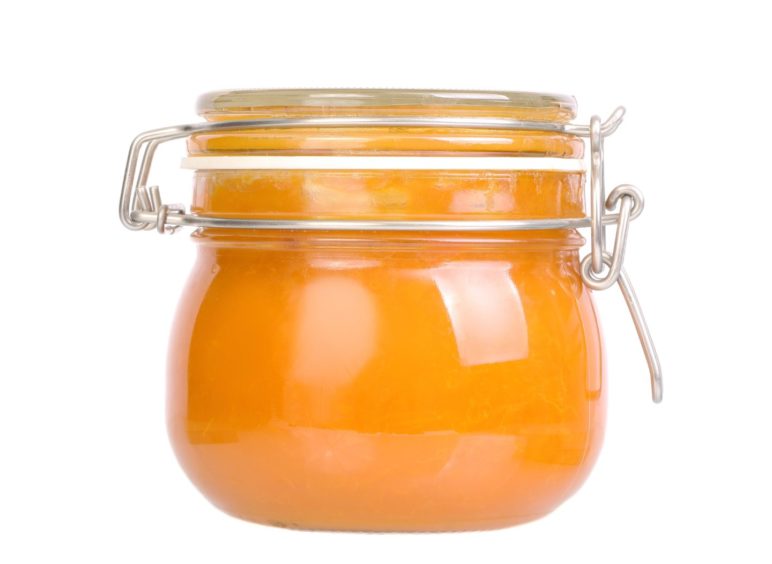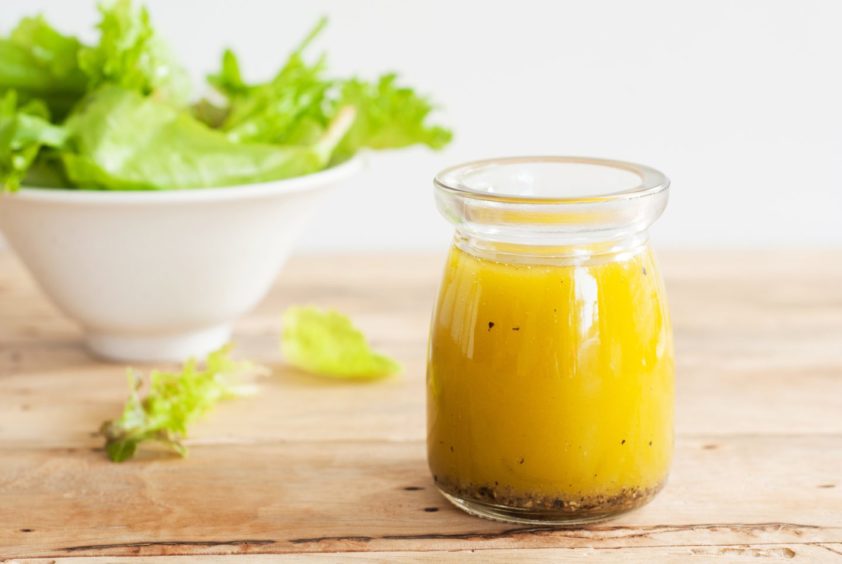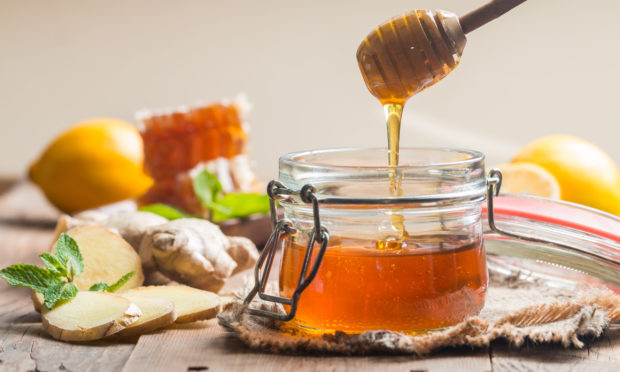Top cook Lady Claire Macdonald shares her love for the natural sweetener in her latest column.
This month I want to concentrate on one food, which has recently received recognition as being the best antidote to coughs and colds – which most of us knew already!
I am, of course, referring to honey.
Honey is produced by several people the length and breadth of Scotland. And it varies widely entirely depending on the flowers or plants from which the honey-producing bees have garnered the pollen.
For instance, and to lay my cards on the table from the start, I dislike intensely heather honey.
Godfrey loves it, but for me, the taste of it is unpleasant and it dominates in any recipe. Yet I love all other types.
I think that I prefer a thick honey, and heather apart which is a darker colour, most others tend to be light in colour.
Runny honey is almost as delicious as thick, but for me, too messy. But the runny stuff is usually the best form of honey to use in cooking, depending on its flavour.
For instance, at the moment we can buy the most delicious acacia honey, runny of texture, in the Co-op in Broadford. Its flavour makes it the perfect sweetener and flavour enhancer for poaching apricots and plums.
Honey features in many recipes, both savoury and sweet. But one dish regularly seen on menus is honey-cooked parsnips or carrots – neither of these root veg needs sweetening. They both contain enough natural sugar as it is, which when roasted, for instance, results in caramel exteriors of either parsnips or carrots.
Why add honey to them?
The result is overly sweet. It’s also a good idea to try to train our taste buds away from eating too-sweet dishes – save this for luscious puds!
Honey can, and does, enhance the flavour of citrus and meats such as pork, ham and both domestic and wild duck.
My first recipe is for a dressing which is particularly good with a first course salad containing walnuts and cheese. But it’s also very good with any green leaf salad, or with an orange and watercress salad served with roast duck.
The second recipe, orange, grapefruit and honey jelly is good with roast duck, roast pork and baked ham.
Meanwhile, can I just say that I do admire those who are organising this year’s Taste of Grampian Food and Drink Festival.
Despite the restrictions imposed on us all by Covid-19 the festival will go ahead, albeit virtually, when once again we will all be provided with a wonderful display of the large variety of food and drinks produced throughout the Grampian region.
Orange, grapefruit and honey jelly
(Serves 6)

Ingredients
- 2 oranges
- 1 pink grapefruit
- 300ml red wine vinegar
- 2 level tbsp thick honey
- 450ml chicken stock
- 1 fairly level tbsp arrowroot
- 1 tsp salt
- 10 grinds black pepper
- 1 heaped tbsp finely snipped chives
Method
- Heat the wine vinegar in a saucepan with the honey.
- Pare the rind of one orange and the grapefruit with a potato peeler and, with a sharp knife, slice finely into thin shreds.
- Add these to the wine vinegar mix.
- Juice the oranges and grapefruit and add this, along with the stock to the pan.
- Bring the liquid to simmer.
- Mix a small amount of stock into the arrowroot, then mix this with the contents of the saucepan.
- Stir till the sauce simmers.
- Serve warm, if you prefer, cold as a soft jelly.
Honey and slightly curried salad dressing
(Serves 6)

Ingredients
- 1 rounded tsp medium strength curry powder
- 2 tsps runny honey
- 1 level tsp salt
- About 10 grinds of black pepper
- Finely grated rind of 1 lemon or lemon
- Juice of ½ a lemon (or all of the lime)
- 5 tbsp extra virgin olive oil, or rapeseed oil such as Cullisse or Macintosh of Glendaveney
Method
- Mix the salt, pepper, curry powder, honey and finely grated rind of the lemon or lime together.
- Add in the juice, then gradually the oil.
- Mix very thoroughly and store in a screw-topped jar till required.
- Shake the jar very well before dressing the salad.

